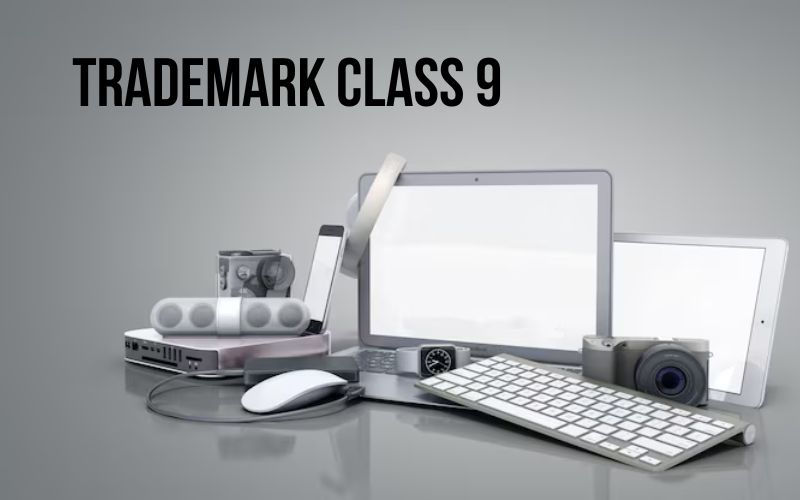Trademark Class 9: Technology, Electronics, Scientific Instruments and Software
- Zubairul
- Aug 19
- 3 min read

In today's fast-paced digital world, a great idea is just the beginning. Whether you've developed the next big app, designed a revolutionary smart device, or created a new piece of scientific equipment, protecting your brand is just as crucial as the innovation itself. This is where trademark class 9 comes in—it’s the essential category for guarding your intellectual property in the realms of technology, electronics, and scientific instruments.
What is Trademark Class 9?
The world of trademarks is organized under the Nice Classification system, which divides goods and services into 45 distinct classes. Trademark class 9 is the home for products that are scientific, electronic, and technological in nature. It's a broad and dynamic category that has evolved to keep pace with modern innovation.
This class isn't just about computers and phones; it's a comprehensive umbrella covering a vast range of products. Think of it as a digital guardian, protecting everything from the most complex scientific apparatus to the simplest piece of electronic equipment. If your product has an electrical component, operates via software, or is used for a scientific purpose, there’s a strong chance it belongs in this class.
A Deep Dive into the Goods
To truly understand trademark class 9, it helps to look at some specific examples. The goods covered here can be broken down into several key categories:
Information Technology & Software: This is one of the most significant areas within the class. It includes computer hardware like laptops, desktops, and servers, as well as peripherals like monitors, printers, and scanners. Most importantly, it covers all kinds of software. Whether it's a mobile application, a downloadable computer program, an operating system, or even virtual reality software, it falls under this class.
Electronics & Wearable Technology: From smartphones and tablets to smartwatches and fitness trackers, this category is all about consumer electronics. It also includes the accessories that go with them, such as chargers, headphones, and speakers.
Scientific & Optical Instruments: This class extends beyond consumer tech to cover professional and research tools. Examples include laboratory equipment like microscopes and measuring instruments, as well as optical goods such as eyeglasses, sunglasses, and binoculars.
Safety & Security Equipment: The class also includes apparatus designed for protection and safety. This can range from fire alarms, burglar alarms, and security systems to protective clothing like bullet-proof vests and fire-resistant suits.
Audiovisual & Communication Devices: This area covers a wide variety of equipment for capturing and reproducing sound and images. Think cameras, video recorders, microphones, and televisions.
Why Trademark Protection is a Must?
For any business, especially in the fast-paced tech sector, securing a trademark is a critical step in building a sustainable brand. A registered trademark grants you the exclusive right to use your brand name, logo, or slogan in connection with the goods listed in your application.
Without trademark registration, your brand is vulnerable to copycats and competitors who might try to confuse consumers with a similar name or design. This can lead to a loss of market share, damage to your reputation, and costly legal battles. By formally registering your trademark, you establish legal ownership and build a strong foundation for your brand’s identity. It tells the world that your product is unique and that its quality and reputation are your responsibility alone.
Navigating the Trademark Registration Process
The process of trademark registration can seem daunting, but it’s a systematic journey. It starts with a thorough search of existing trademarks to ensure your chosen name or logo isn't already in use, especially within trademark class 9 or a related class.
Once you’ve confirmed your mark is unique, you prepare and file an application with the relevant trademark authority. After submission, your application will be examined by an official to ensure it meets all legal standards and does not conflict with existing trademarks. If there are no objections, your mark is published for a public opposition period, giving others a chance to object if they believe it infringes on their rights. A smooth process can take several months, but if there are objections, it may take longer.
Finally, upon successful completion of all stages, the trademark is registered, and you receive an official certificate. The protection lasts for 10 years and can be renewed indefinitely. This step solidifies your brand’s presence and provides a powerful tool for preventing brand imitation.
Related Post: Trademark Class 35











Starting a business in India becomes smoother when you choose to register a register private limited company. At Taxlegit, we provide complete support from name approval to incorporation, ensuring compliance with MCA norms. A private limited company offers limited liability, better credibility, and funding opportunities. Entrepreneurs looking for long-term growth prefer this structure for its flexibility and recognition. With expert guidance, you can complete the process online without hassle. Taxlegit makes it simple, secure, and affordable for startups and small businesses to begin their journey with the right legal foundation.